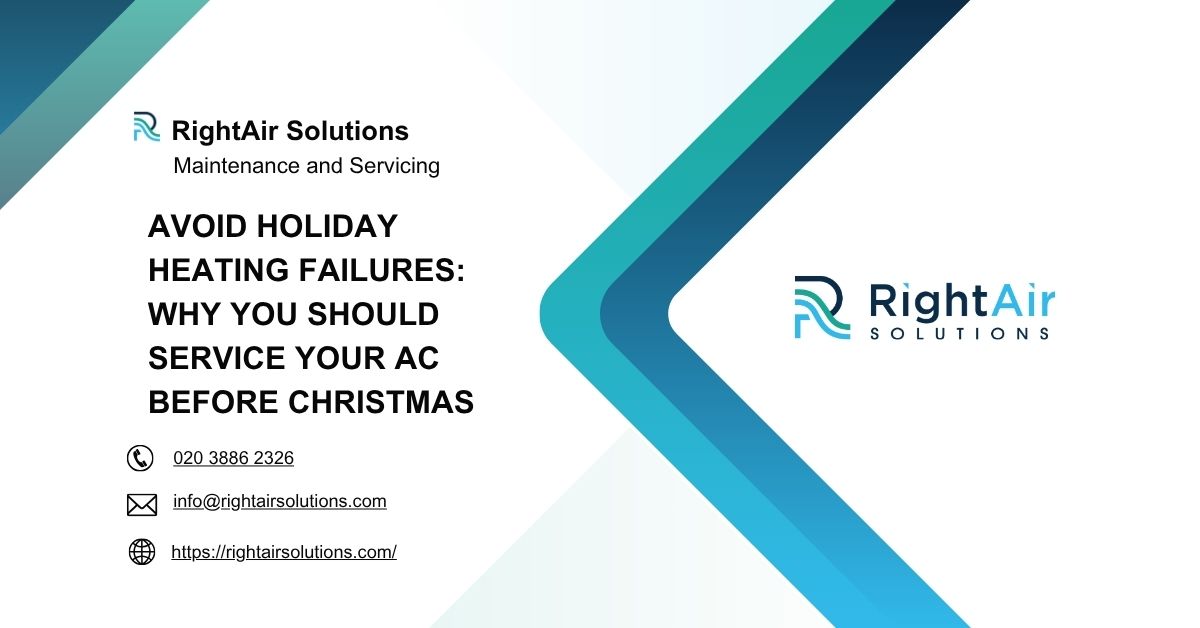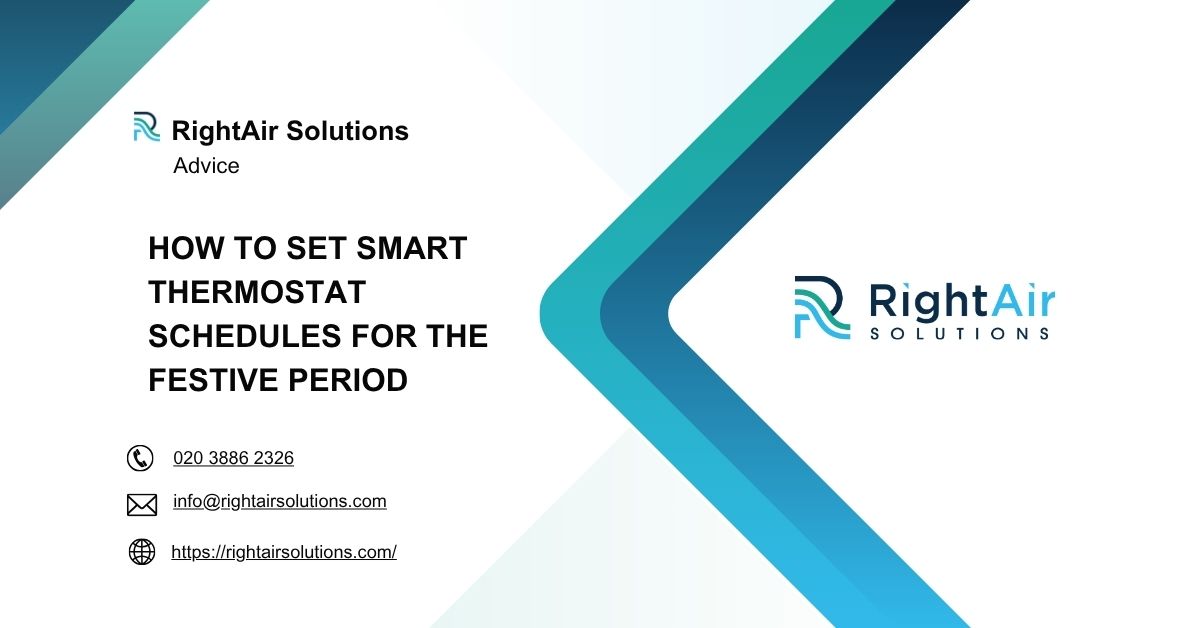
Avoid Holiday Heating Failures: Why You Should Service Your AC Before Christmas
Don’t let your heating fail this Christmas. See how one quick service visit can save your holiday, your comfort, and your wallet. Act before it’s too late.
RightAir Solutions is a company that specialises in commercial air conditioning services.
Evaporative air conditioning is a natural method of cooling that uses water to lower air temperature. Warm air is pulled through water-saturated cooling pads where the water evaporates, absorbing heat from the air and creating a cooler airflow. The cooled air is then distributed throughout a building to create a more comfortable environment. Unlike traditional air conditioning systems that rely on chemical refrigerants, evaporative cooling is an environmentally responsible and energy efficient alternative.
Evaporative cooling is based on a simple but effective scientific principle. When dry air passes over water, some of the water evaporates into the air. This phase change from liquid to gas absorbs heat, cooling the air naturally. This same process explains why you feel cooler when a breeze hits you after swimming. Evaporative air conditioners apply this principle at scale to cool homes, offices, and industrial facilities.
With British summers getting hotter, many homeowners and businesses are seeking more energy efficient and environmentally responsible ways to cool their spaces. Evaporative cooling systems offer a practical solution by reducing electricity consumption, improving indoor air quality, and lowering running costs. Fresh air ventilation also supports healthier indoor environments, a factor that is increasingly important for workplaces and family homes.
Evaporative cooling systems work by drawing warm external air into a unit where it passes over wet cooling pads. The water in the pads evaporates, absorbing heat from the air. The now cooler and slightly more humid air is then circulated through the building. The performance of these systems depends on the wet bulb depression, which is the difference between the dry bulb and wet bulb temperatures.
Higher efficiency systems like indirect evaporative coolers add an additional heat exchanger to cool the air without increasing indoor humidity. Two stage systems combine direct and indirect cooling to deliver even better performance, making them suitable for a wider range of UK conditions.
Learn more about our range of evaporative cooling solutions and find the right option for your needs.
Pro Tip: Always maintain an open pathway for air to flow through your building when using evaporative cooling. Proper ventilation dramatically improves performance and keeps indoor humidity at comfortable levels.
An evaporative air conditioning system typically includes:
An axial or centrifugal fan to move the air
A set of cellulose or synthetic cooling pads
A water distribution system with a pump
A sump for water collection
A control panel to manage operation and water quality
Some advanced models also include UV filtration, salinity control probes, and automated cleaning cycles for better hygiene and efficiency.
See how affordable and effective evaporative air conditioning can be for your property.
Portable evaporative coolers are compact units designed to cool individual rooms or small areas. They are ideal for residential use, offering flexibility without the need for permanent installation. Units are easy to operate and maintain, needing only water refills and occasional cleaning.
Large scale systems are used in commercial and industrial buildings to provide comprehensive cooling. These systems are connected to a duct network that distributes cool, fresh air throughout the premises. They are perfect for warehouses, factories, and retail environments where high heat loads need efficient control.
Two stage cooling systems pre cool the air using indirect methods before passing it through wet pads for final cooling. This approach reduces humidity while improving cooling performance. M-Cycle cooling, based on the Maisotsenko Cycle, uses an innovative heat exchanger design to achieve near dew point cooling without adding moisture to the air, making it ideal for more humid conditions.
Evaporative cooling systems can use up to eighty percent less electricity compared to conventional refrigeration based systems. This results in significant savings on energy bills, especially during extended periods of hot weather.
Evaporative cooling avoids the use of synthetic refrigerants like hydrofluorocarbons, which contribute to global warming. Water is the only cooling medium, making it a cleaner and more sustainable choice for environmentally conscious users.
Evaporative systems continuously introduce fresh outdoor air, unlike refrigerated systems that often recirculate indoor air. This process improves indoor air quality, reduces carbon dioxide build up, and helps remove airborne pollutants and odours.
By consuming less electricity and eliminating harmful refrigerants, evaporative air conditioning contributes to a lower carbon footprint. Reduced reliance on fossil fuel generated electricity also supports broader sustainability efforts.
Traditional refrigerated systems are energy intensive and use chemical refrigerants that can leak into the atmosphere. In contrast, evaporative cooling offers a low impact alternative that saves money and benefits the environment without sacrificing performance.
Evaporative cooling performs best in hot and dry conditions where humidity levels are lower. During the typical British summer, particularly in the south and east of England, conditions are often ideal for efficient evaporative cooling.
In more humid areas, advanced systems like indirect or two stage evaporative coolers maintain strong performance without raising indoor humidity to uncomfortable levels. Choosing the right system for the climate and application is essential for optimal results.
Find out more about climate suitability for evaporative cooling by contacting us for real world advice.
Evaporative air conditioners are an excellent option for homeowners looking to cool living spaces economically. They provide a healthier indoor environment by improving ventilation and are particularly suitable for homes with open plans and good airflow.
Businesses use evaporative cooling in warehouses, factories, and retail premises to maintain comfortable working conditions while keeping operational costs low. Systems can be tailored to suit different building layouts and cooling requirements.
Regular maintenance ensures the system continues to operate efficiently. Cooling pads should be inspected monthly during peak use and cleaned or replaced if needed. Filters must also be kept clean to maintain airflow and hygiene.
Water quality is vital for system longevity. Advanced systems monitor salinity levels automatically and flush the system as needed to prevent mineral buildup, which can damage components and reduce efficiency.
Before each cooling season, carry out a full system inspection, clean the sump and water distribution components, check fan operation, and ensure all controls and sensors are functioning correctly.
Modern systems are designed to control humidity effectively. Two stage and indirect cooling methods allow for comfortable cooling even when outdoor humidity rises.
In the right conditions, evaporative coolers can deliver comparable comfort levels while using far less energy. With proper system selection and installation, performance is excellent.
How much can you save with evaporative cooling?
Evaporative cooling systems typically cost up to seventy percent less to run than conventional air conditioning. Savings depend on local energy prices, system size, and usage patterns.
A medium sized warehouse could reduce its cooling costs by more than four thousand pounds annually by switching to an evaporative air conditioning system. This makes a strong case for businesses looking to cut operating expenses.
When selecting a system, factors such as building size, occupancy, airflow requirements, and local climate must be considered. A professional assessment ensures the right choice for optimal cooling performance.
RightAir Solutions offers expert advice, quality installation, and reliable maintenance for all types of evaporative cooling systems. Our tailored solutions help homeowners and businesses enjoy efficient, sustainable comfort.
Water use varies but generally ranges between fifteen and forty five litres per hour depending on system size and cooling load.
Yes, particularly with indirect and two stage systems which control humidity more effectively.
Leaving windows or vents open is recommended to allow stale air to exit and maintain fresh airflow.
Pads and filters should be checked monthly during heavy use, and a full system service should be completed annually.
It is most effective in dry and warm climates but with the right system, it can perform well even in more humid parts of the UK.
To find out more about how evaporative air conditioning can work for your home or business, contact RightAir Solutions. Our expert team is ready to help you choose the perfect system and enjoy the benefits of energy efficient, environmentally responsible cooling.

Avoid Holiday Heating Failures: Why You Should Service Your AC Before Christmas
Don’t let your heating fail this Christmas. See how one quick service visit can save your holiday, your comfort, and your wallet. Act before it’s too late.

How to Set Smart Thermostat Schedules for the Festive Period
Find out how to make your smart thermostat work smarter this Christmas. Get festive-ready with tips most homeowners forget but wish they hadn’t.

How to Choose the Most Budget Friendly Heating System for Your Home in 2026
Which heating system saves you most in 2026? Discover smart upgrades, key grants, and future proof choices that lower bills without the stress.
RightAir Solutions

At RightAir Solutions, we provide air conditioning services to domestic and business customers for heating and cooling units. We also supply and fit commercial AC and HVAC services with our insured, qualified and experienced London team of air con engineers.